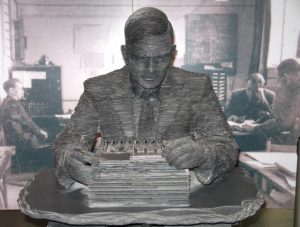3 Artificial Intelligence Overview
Megan Mocko, Alexandra Bitton-Bailey, Ph.D. & Lauren Weisberg
History
The beginning of AI in many ways can also be considered the beginning of computing which took place in the 1930s in Cambridge with the work of Alan Turing. Until very recently, most people did not know the full scope of Turing’s work because it was primarily conducted under the Official Secrets Act of World War II. Additionally, Turing was a homosexual, which was considered a criminal offense at the time. Thus he was subjected to aberrant treatments and ultimately took his own life while his contributions were brushed under the rug.

However, AI scientists and computer scientists revere him for his work in mathematics and his greatest invention: the computer. Turing invented the computer as a method to solve The Entscheidungsproblems, which asks whether there are mathematical questions that cannot be answered by simply following a recipe. The Turing machine, which could be used to solve repeated recipe problems, helped to answer the question by demonstrating the Turing machine halt when asked if they do indeed halt. The proof was simple, and the machine used to answer the question is a powerful problem solver that is the grandfather of modern computers and, ultimately, AI.
Turing machines, computers, and electronic brains can quickly and reliably solve complex problems based on the directions provided. But AI is a little different, posing a new set of problems and making AI progress elusive and long in coming.

Feedback/Errata